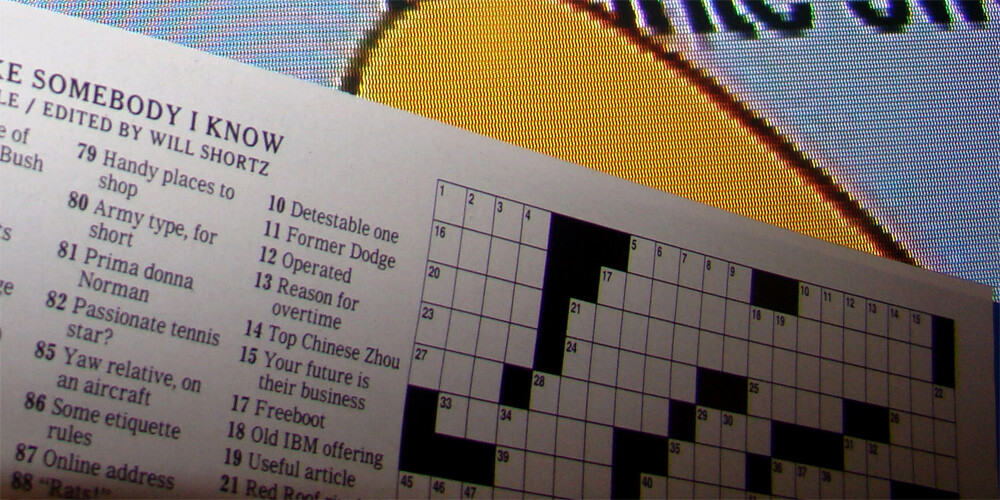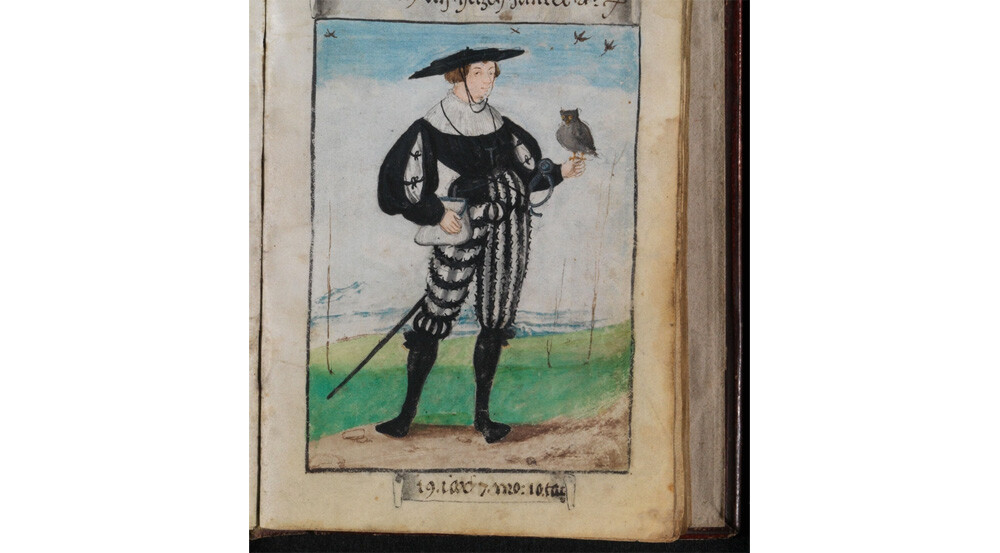5 Scientific Discoveries Spotted By Examining The Unlikeliest Stuff

Science is great. It's so universal and accessible that you use its tenets even when you don't realize it. Every time you spray the Golden Corral parking lot with puke, then limit yourself to seven plates on the next (day's) visit, you're practicing science through trial and error. And that's one of the best things about science, as the following examples illustrate: Even when it sounds stupid, it's still just as valuable as "good science"…
Tiny Inclusions In Brazilian Diamonds Reveal Oceans' Worth Of Water Hidden In The Earth's Mantle
Diamonds are mostly useless and only expensive because of propaganda and a global monopoly. But other than "sealing the deal" in an unconsummated relationship, there is one thing diamonds are useful for: revealing Earth's geologic secrets.
Don't Miss
Ironically, it's the teeny-tiny inclusions within teeny-tiny diamonds that are valuable to science. The inclusion is made of ringwoodite, a mineral that forms in the presence of water. But only under the immense pressures and scrotum-vaporizing temperatures found 300-400 miles beneath the crust, in the transition zone between the upper and lower mantle.

By analyzing the amount of hydrogen and oxygen in ringwoodite inclusions, scientists can infer how much water is locked away deep in the rocks. But natural ringwoodite specimens are scarce due to their balls-deep origin; a leper could count on one hand how many naturally formed ringwoodite specimens are available to science. Luckily, a ringwoodite-rich diamond, vomited onto the surface by a volcano, was discovered in Brazil. And it reveals that the mantle could hold more than twice as much water as the oceans.
But wait, there's more! Another Brazilian diamond, excreted from Satan's anus 600 miles down, held an inclusion of ferropericlase, one of the lower mantle's main constituents. It suggests the lower mantle (which comprises half of Earth's mass) could also hold as much water as Earth's oceans. So that's three oceans-masses so far, all carried into the depths by the movement of tectonic plates.

Combined with the water content in the crust and upper mantle, Earth's bowels could hide four times as much water as all the oceans. So while some scientists contend that the planet's water arrived via comets, it might have been hidden in the rocks this entire time, slowly seeping out over billions of years.
Or, we could just go with the much simpler creationist theory: the galaxy-spanning lizard snapped its fingers one day and made everything so.
Lice Reveals The Origin Of Clothing
Like that one roommate who eats the leftovers you've been saving, drinks all your booze, and leaves wadded up Kleenex in your bathroom, body lice are opportunistic little profiteers that suck your blood and make love in your clothes. But since body lice are so specialized, they didn't exist until humans started covering their shamefully jiggly bodies with clothes. Unfortunately, softer materials from bygone epochs don't preserve well, unlike the sturdy leather assless chaps that will one day confound the cyborg archaeologists of the third millennium. But researchers can trace the origins of clothing by pinpointing when body lice diverged from head lice.

Based on genetic changes in various lice lineages, which adapted alongside (and on top of) humans, researchers say our prehistoric cousins started wearing clothes approximately 170,000 years ago, during the second-to-last Ice Age. Humanity's snazzy new habiliments, first fashioned from animal skins and today fashioned by unpaid orphans in sweatshops, allowed ancient humans to migrate from the sunny, vibrant African motherland into the majestically cold-ass environs of Europe (and England).
The researchers add that, based on studies that examined the genes that influence skin color, we humans lost our thick, hairy coats around one million years ago. So our ancestors survived au naturel for hundreds of thousands of years, dodging leopards while streaking their way across the mother continent.

Until the advent of clothing fostered migrations into colder climes. And also birthed body lice, demonstrating one of evolution's most prominent processes. As soon as a new niche opens, some opportunistic, possibly unsavory little thing takes advantage, like squatters inhabiting an abandoned, fire-damaged Arby's.
A Peanut Snack Reveals A Better Way To Fight Allergies
Israeli kids and their parents love Bamba, a peanuty corn puff snack. Meanwhile, Bamba shareholders love that their puffs have achieved global medical fame by inadvertently preventing childhood peanut allergies.

In 2008, scientists discovered that Israeli kids were 10 times less likely to develop the allergy than their Jewish counterparts in Britain, even after accounting for other relevant factors. The difference? Israeli babies are fed Bamba before their first birthday. But in the U.S. and U.K., parents were advised to withhold peanut-based foods until their children's third birthday – ironically, to prevent allergies.
Then in 2015, a food study confirmed the Bamba phenomenon. It included 530 babies (aged 4 to 11 months) with egg allergies or eczema, suggesting a high risk of developing a peanut allergy. Half the babies were fed the equivalent of 24 peanuts a week, in the form of Bamba, peanut butter, or some other peanut-based foodstuff. The other half received zero peanut-based vittles. Among the peanut-eaters, only 1.9% developed the allergy by the time they were five years old, compared to 13.9% among the peanut-abstinent children. Of another 98 children, only mildly at risk, 10% of those fed the forbidden treat developed a full-blown allergy, compared to 35% of those who were denied its fatty, salty goodness.

Allergy experts now recommend feeding peanut-based snacks to their babies at four to six months, given a doctor's blessing. Whole peanuts present a choking hazard, so a powder, extract, or butter (possibly in chocolate-covered cup form) is recommended to avert another Kinder Egg catastrophe.
This could also overturn the draconian lunch-room ban on PB&Js, giving malnourished American school-children a much-needed source of salubrious simple sugars and hydrogenated oils. New guidelines can also hopefully reverse the explosion of peanut allergies, which have more than quadrupled during the peanut-avoidance dark ages of 1997-2010. And though most sufferers experience less severe symptoms, peanuts cause more deaths via allergic reaction than any other food, a fact Big Peanut gladly sweeps under the rug.

The New York Times Crossword Puzzle Highlights America's De-Culturization (And Fatten-Ization)
If the proliferation of reality TV and firework-related fatalities isn't ample evidence of America's mass-dumbening, the devolution of the Times crossword puzzle provides further proof. Over the past 80 years or so, the New York Times' famed crossword has become easier and now includes fewer, simpler global references. Compared to its cultural peak in 1943, it now features two-thirds fewer international references and one-third fewer foreign words than in 1966. And, considering the demographics that dabble in crossword generally inhabit the upper two quartiles of intelligence, this suggests everybody is getting dumber.

Past puzzles required at least some knowledge of foreign words. Like mit ("with" in German) or vir ("man" in Latin), reflecting a golden age when men spoke the language of Virgil and smoked cigarettes around preschoolers. But that epoch has closed, and crossword clues have become more obvious. For example, "Uber" is no longer clued as a German word but as a car-sharing service (that screws its customers).
To be fair, some foreign words have increased in frequency. But even that highlights a negative trend: they're words people only know because they've eaten them (taco, dim sum, churro). In the same vein, the term "Lipo" no longer refers to the ancient Chinese poet but a surgical procedure.

And the geographical questions have decreased in difficulty. In the past, a clue may have simply hinted "Burkina ____," referring to Burkina Faso, the landlocked West African country known for its, uh ... the landlocked West African country. But now, the puzzlers offer an extra bit of information, hinting that the answer is an African country. Overall, international geographic references have decreased, from more than 15% to around 5%.
But screw it, what's the point of knowing all those obscure countries and funny-sounding, hard-to-spell words when the only three letters that matter are U, S, and A, bay-bee!
An Eccentric German Accountant Accidentally Immortalizes The Fashions Of The Past
Matthäus Schwarz was a 16th-century German accountant from Augsburg. And an eccentric fashionista who, over 40 years, commissioned 137 watercolors of himself flaunting various styles, known today as "sick fits." In doing so, he unknowingly became the spiritual predecessor to Vogue, social media fashion accounts, and Reddit's What Did You Wear Today?
Middle-class Matthaus began his Klaidungsbuchlein, history's first "book of clothes," while accounting for a man known as (Jacob) Fugger the Rich. Laugh all you want, but Jacob descended from a line of merchant Fuggers so wealthy they earned the honorific "Medici of the north."
And in an era predating off-the-rack clothing shops, Schwarz (collaborating with garment-makers) used Fugger's textiles to meticulously create fresh and funky fashions. Like the doublet pictured bottom-left, a frilly number decorated by making 4,800 tiny cuts (or "pinks") in the fabric. The ninja-esque getups on the right demonstrate the mourning attire he donned at his father's funeral.

And Schwarz commemorated all sorts of events, including birthdays, weddings, and outings. The following image shows Schwarz in 1516 when he "wanted to become a huntsman," before realizing it involved actual hunting and not just flouncing about in flashy dress.

Schwarz also displayed an honesty wholly lacking in today's influencer culture. At age 29, he commissioned nudes, noting that he "had become fat and large." A revolutionary act, as the majority of contemporary nudes featured gods and other legendary figures. Schwarz, on the other hand, just wanted to show off an ass so voluptuous it could make Sir Mix-a-Lot blush:

His self-awareness is relatably endearing. In 1525 he donned a wedding outfit and marked the period during which he "began to be fat and round."

And in 1538, he "decided to take a wife" and immortalized the momentous event with a picture of the wedding gown ... his wedding gown:

Aged 63, he compiled and bound the watercolor paintings. Then we like to think he laid himself down, sighed contentedly, and evaporated into the ether, Obi-Wan Kenobi-style. Actually, he lived on but commissioned no more paintings. He urged his son to continue the family tradition, but Veit Konrad Schwarz considered fashion a foolish pursuit.
Tantalizingly, we may have never seen Schwarz's true potential. Dope as he looked, he was stymied by social conventions. And sumptuary laws, which literally made it illegal to be too fly, in hopes of quashing extravagance and limiting everyone to their station. Who knows what futuristically flamboyant fits we'd be rocking today had Schwarz enjoyed free rein to indulge his sartorial perversions.
Top Image: istolethetv/Wiki Commons